The Skyscraper Museum is devoted to the study of high-rise building, past, present, and future. The Museum explores tall buildings as objects of design, products of technology, sites of construction, investments in real estate, and places of work and residence. This site will look better in a browser that supports web standards, but it is accessible to any browser or Internet device.
TOP TOURIST TOWERS
Observation Decks, Bars, Food & Thrills
For its exhibition TEN TOPS, the Skyscraper Museum compiled a list of the highest publicly-accessible tourist spaces around the world. The heights of observation decks are identified by black dashed lines, and publicly accessible restaurants or bars are marked with red lines. Skyscrapers with ticketed observation decks are indicated in light blue, while those with publicly accessible restaurants or bars are shown in dark blue. Telecommunications/ observatory towers are indicated in red. Several building silhouettes are based on images of the CTBUH’s Skyscraper Center database. Scroll right to view the entire lineup.
View the entire list with heights.
HOW HIGH IN THE SKY?
Views from the tops of skyscrapers have high value. Millions of tourists buy tickets to the observation decks of cities’ tallest towers, make special-occasion reservations at aerial bars and restaurants, or seek scary experiences walking on glass floors and other acrophobic inducements. Night vistas of the necklaces of lights of a sprawling metropolis hold romance, while day views afford Olympian understanding of the map and structure of a city. There are a myriad reasons to visit the summits of supertalls.
While Gothic spires and campanile have long attracted a stream of sight-seekers, the mass-tourism concession dates back to the mid-nineteenth century, when towers like New York's 315-foot Latting Observatory or the 1889 engineering wonder of the Eiffel Tower were erected by entrepreneurs keen to make a profit on ticket sales.
Many of New York’s early skyscrapers – especially those that sought the record of world’s tallest building – included a ticketed observation level. The World Building in 1890, the Woolworth Tower in 1913, and the Empire State Building from 1931, all offered the general public the opportunity to take in a panoramic of he city from unprecedented heights.

From left: Latting Tower, Eiffel Tower, World Building, Woolworth Building, Empire State Building.
Broadening the criteria for inclusion in TEN TOPS, our lineup above includes structures classified as observation towers by the Council on Tall Buildings and Urban Habitat, along with buildings of 100+ stories. (According to the CTBUH definition, to be called a building, a structure must allocate at least 50 percent of its height to occupied usable space.) Noted in red in our line-up, the structures erected as telecommunications/ observatory towers include the Canton Tower in Guangzhou, the Tokyo Skytree, Toronto’s CN Tower, and Shanghai's Oriental Pearl Tower. While they do not have countable “floors”, these structures were a logical addition to our list because of they were as tall as our 100-story skyscrapers and because of their purpose as tourist destinations. Likewise, we included the 88-story Petronas Towers in Kuala Lumpur and Jin Mao in Shanghai because their observation decks were, in fact, higher than that of our shortest 100-story skyscraper, the John Hancock Center.
In addition, our line-up includes skyscrapers without observation decks, but with publicly-accessible restaurants or bars, where for the price of a meal or a drink, visitors can enjoy the raison d’être of the venue: the view. This list of ticket prices for observation decks (click here to view prices) compares facilities on our line-up, and also suggest that food & drink establishments fall in the same range of expense.
16. JOHN HANCOCK CENTER

Chicago, USA 100 fl
Deck Height: 313 m / 1,030 ft Tip Height: 343 m / 1,128 ft
Since its opening in 1969, the observatory at the John Hancock Center has been giving tourists an elevated view of Chicago from its 94th floor. The indoor observatory was sold to Montparnasse 56, a company that operates tourist attractions worldwide, in 2012. The Hancock observatory, now called 360 Chicago, offers visitors access to a panoramic view, café, and the new attraction TILT. At 1,030 feet in the air, TILT slowly angles up to eight people out from the side of the building in a glass and steel platform, giving thrill-seeking tourists the chance to stare down over the city’s streets.
See the John Hancock Center in TEN TOPS15. ORIENTAL PEARL TOWER
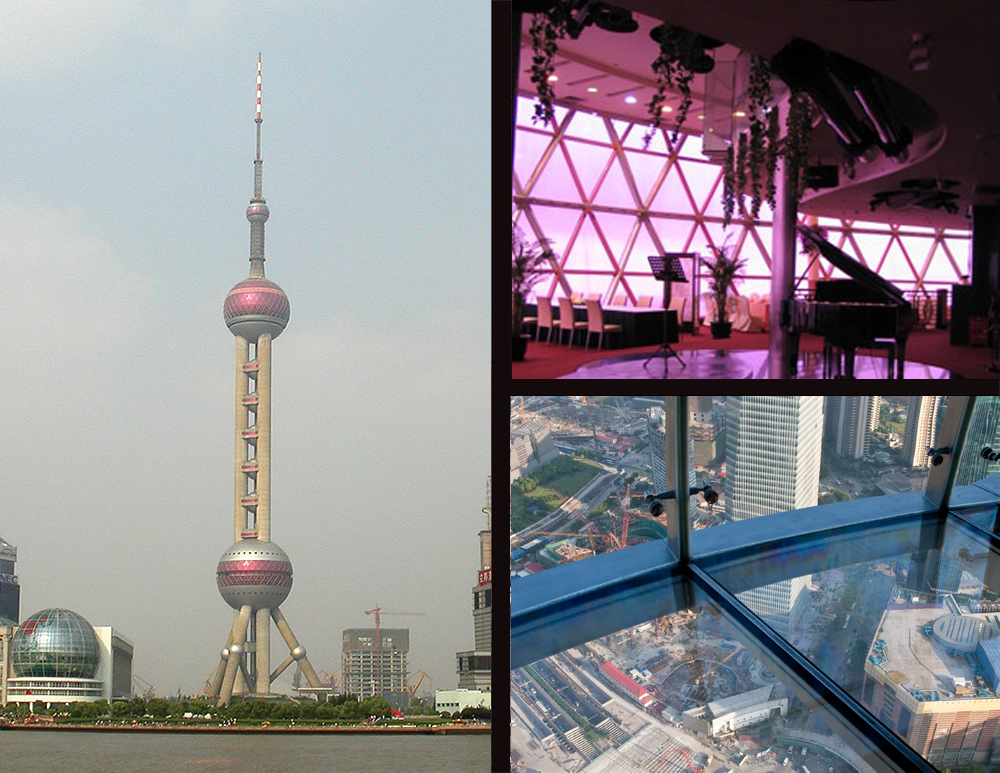
Shanghai, China
Deck Height: 350 m / 1,148 ft Tip Height: 468 m / 1,535 ft
Completed in 1994, the Oriental Pearl Radio & TV Tower was the first supertall structure built in Shanghai's Pudong district, which is now home to three record-breaking skyscrapers: Jin Mao Tower, the Shanghai World Financial Center, and the Shanghai Tower. While its primary function, as its name and form would suggest, is to broadcast television and radio signals, the Oriental Pearl offers a plethora of tourist features, including three observation levels: the futuristic Space Capsule (1,148 ft), Sightseeing Galleria (863 ft), and a glass-floored observatory (850 ft). The tower also contains a revolving restaurant (876 feet), an arcade and indoor roller coaster (321 ft), and the Shanghai Municipal History Museum, located near the base of the structure, which offers a glimpse of China’s largest city before its late-20th century urban transformation.
View TEN TOPS virtual exhibit14. EMPIRE STATE BUILDING
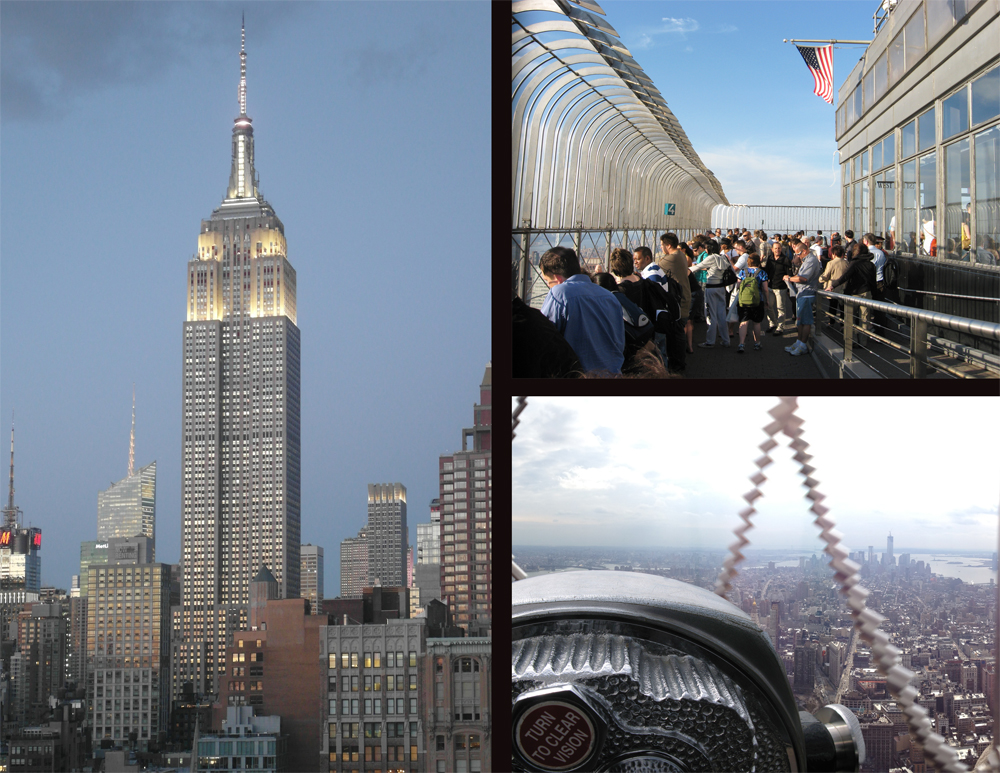
New York, USA 102 fl
Deck Height: 373 m / 1,224 ft Tip Height: 381 m / 1,250 ft
Situated on the 86th floor, at a height of 1,050 feet, the Empire State Building’s main observation deck occupies today, as it did when it opened in 1931, the roof area of the main shaft of the office tower. Tourists can enjoy panoramic views in all directions from both an outdoor terrace, as well as a slightly elevated glass-enclosed viewing area. For a supplement, visitors can take a separate, small elevator that rises through the 102nd floor to a small circular, windowed room, originally designed to serve as the point of debarkation for the airships that were to moor there (but never did!), at 1,224 feet. Learn more about the Empire State Building's mooring mast in TEN TOPS. More than 3.5 million people each year visit the Empire State Building's observation decks.
See the Empire State Building in TEN TOPS13. MARINA 101
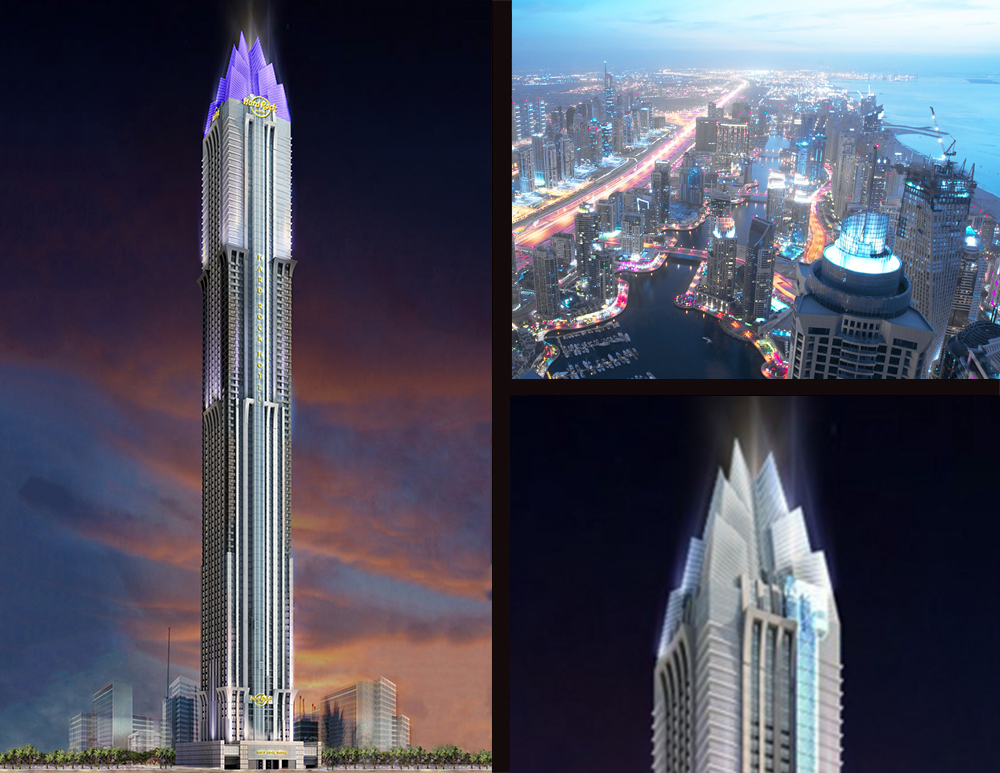
Dubai, UAE 101 fl
Deck Height: 375 m / 1,230 feet Tip Height: 426 m / 1,399 ft
Currently the second tallest building in Dubai, Marina 101 is a residential tower offering luxury apartments and the first Hard Rock Hotel in the Middle East, opening in mid-2015. The Hard Rock Hotel Dubai Marina will operate its club-lounge on the 101st floor at 1,230 feet, the tower’s uppermost level. The space will provide 360-degree views of the city.
12. ONE WORLD TRADE CENTER
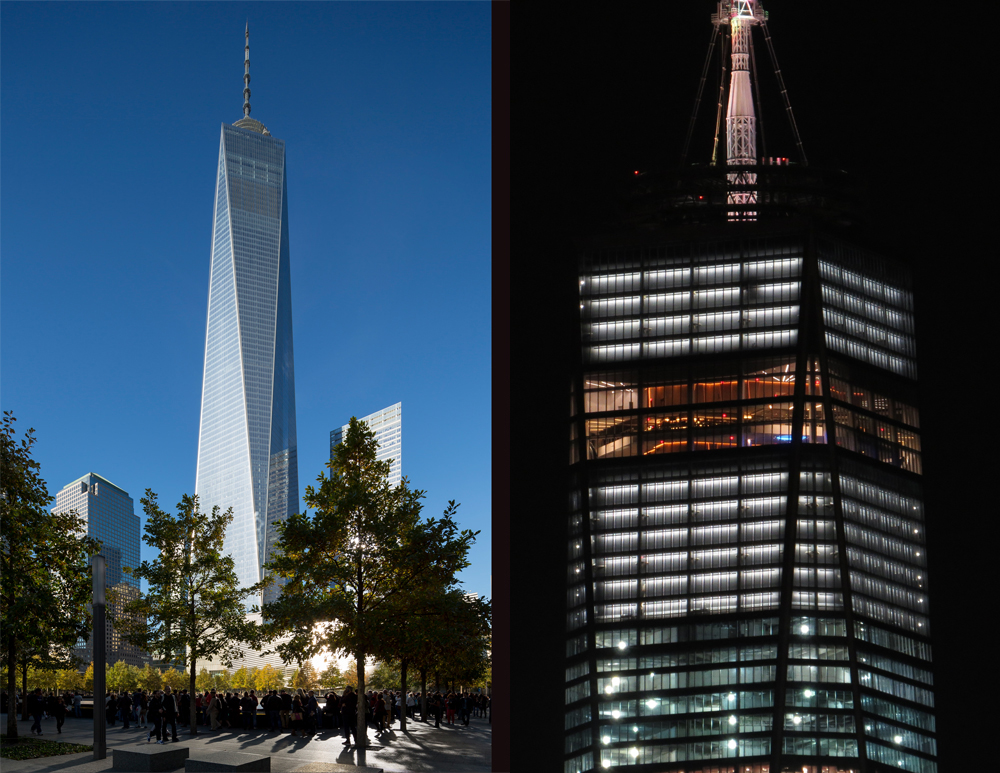
Image credit: Mike Hertl, timekeeper5 on Instagram.
New York, USA 104 fl
Deck Height: 386 m / 1,268 ft Tip Height: 541 m / 1,776 ft
On May 29th, 2015, One World Trade Center opened an observation deck to the public. At 1,268 feet, floors 100, 101, and 102, it provides visitors with panoramic views of New York, as well as restaurants and exhibits. These three floors contain state-of-the-art visual technology to immerse guests into real-time video footage of New York City and its unique landmarks. The Sky Pod elevators are some of the fastest in the world, and transport visitors to and from these observation decks amid a time-lapse animation that depicts Manhattan’s development from 1500 to the present.
See One World Trade in TEN TOPS
11. TAIPEI 101
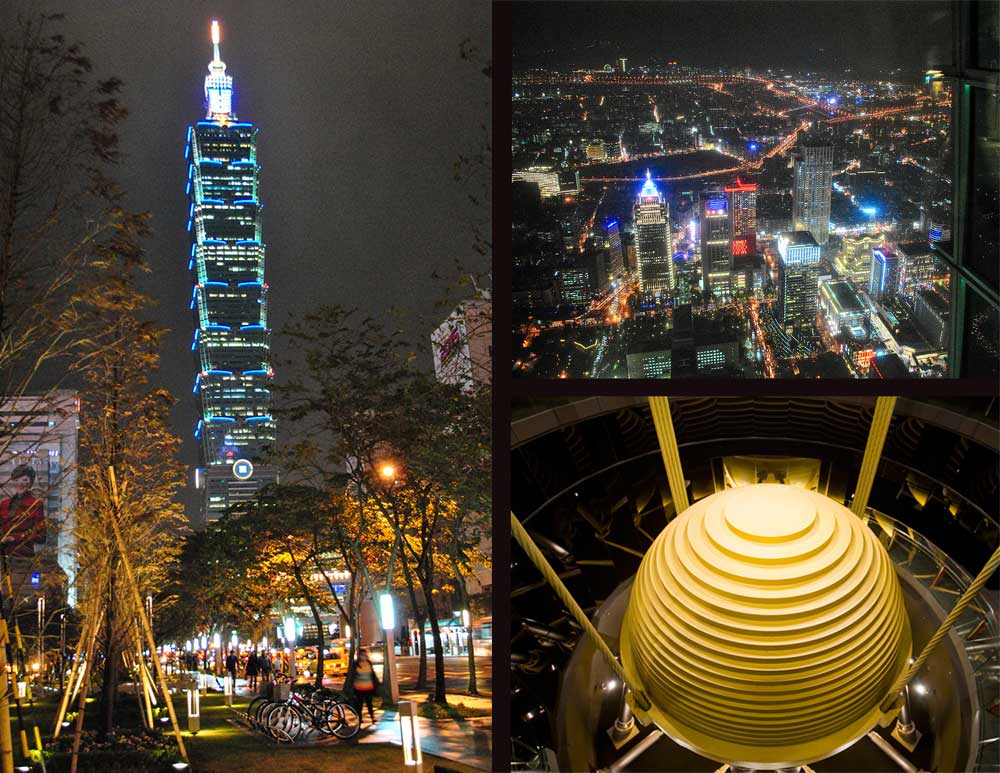
Taipei, Taiwan 101 fl
Deck Height: 391 m / 1,285 ft Tip Height: 508 m / 1,667 ft
Taipei 101 was the first 100+ story skyscraper built in the 21st century and reigned for seven years as the world’s tallest building by virtue of the 60-meter spire that stretched its height to 1,667 feet. The form, reminiscent of a traditional pagoda, repeats the number eight—which is associated with prosperity and good fortune—in eight stacked eight-floor units.
The tower’s top section is a major tourist attraction that offers multiple observation levels with unparalleled views of the city. At level 91, visitors may go outside, but on levels 88 and 89 the view is also inward, to the display of the golden sphere of a tuned mass damper (TMD), an engineering mechanism designed to stabilize building sway. The 660-ton sphere has an 18-foot diameter and hangs from eight cables secured at the 92nd floor. The TMD can reduce resonance by 40 percent and under normal conditions can move up to 13.8 inches. During major typhoons, the TMD can move up to 59 inches, as the video here shows.
See Taipei 101 in TEN TOPS10. INTERNATIONAL COMMERCE CENTER
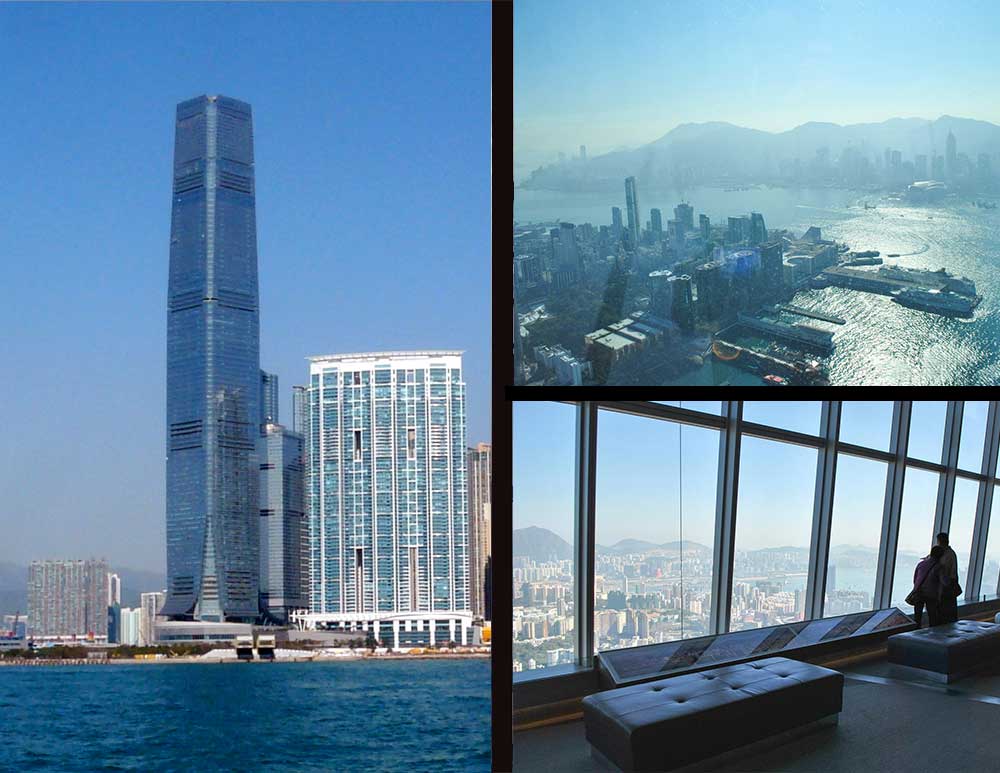
Hong Kong 118 fl
Deck Height: 393 m / 1,289 ft Tip Height: 484 m / 1,588
The tallest building in Hong Kong, the International Commerce Centre (ICC), together with its visual counterpoint, the IFC2 across the water on Hong Kong Island, marks the entrance to Victoria Harbor. The building's 118 stories house over 2.5 million square feet of offices and are crowned by a Ritz-Carlton Hotel, which is the highest hotel in the world. While it has never reigned as the world's tallest building, the ICC does feature the world’s highest cocktail lounge and the world’s highest swimming pool, both located on the 118 floor. For a slightly more than the cost of admission to the tower’s observation deck, the public can enjoy a drink on the bar’s outdoor terrace at 1,538 feet.
See ICC in SUPERTALL!9. SEARS/ WILLIS TOWER
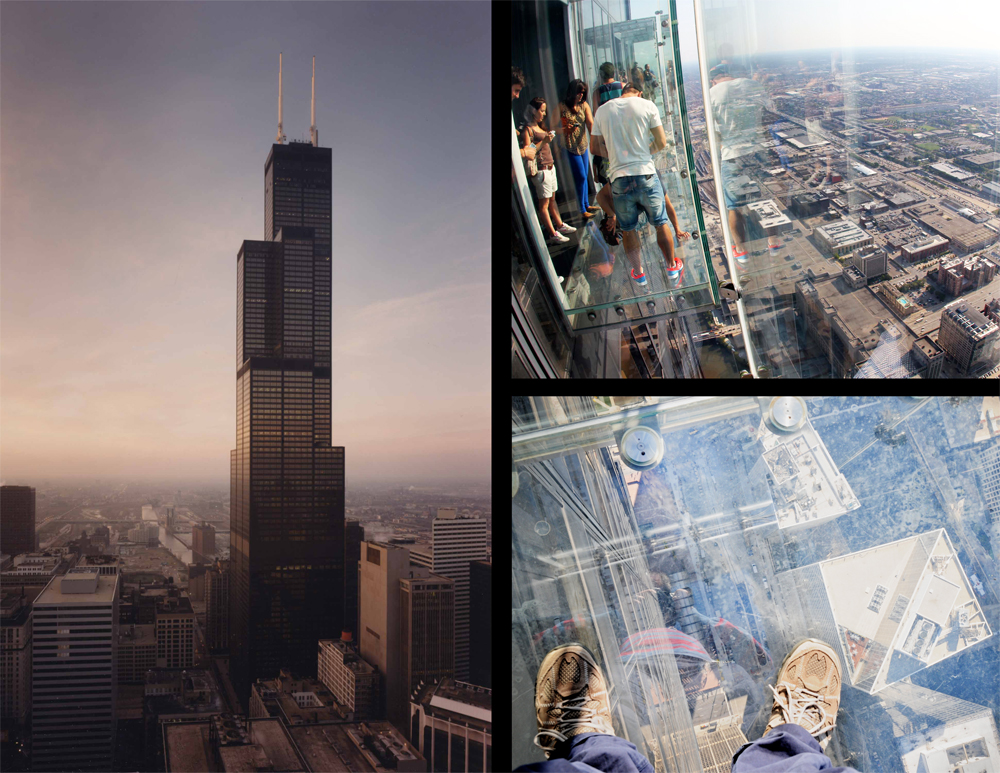
Chicago, USA 110 fl
Deck Height: 413 m / 1,345 ft Tip Height: 442 m / 1,451 ft
Sears Roebuck and Company, then the world's largest retailer, announced plans to build the world's tallest building in downtown Chicago in July 1970. Part headquarters for Sears, part rentable offices, with 110 stories, Sears (now Willis) Tower exceeded the WTC North Tower by 82 feet and held the record for more than 20 years until surpassed by the Petronas Towers in Kuala Lumpur in 1998.
The Skydeck Pavilion on the 103rd floor was added in 1985 by Skidmore Owings and Merrill as a tourist observation deck. In 2009, the attraction was renovated to incorporate retractable glass-floored balconies that extend four feet from the tower.
Visit the TEN TOPS virtual exhibit8. GUANGZHOU IFC
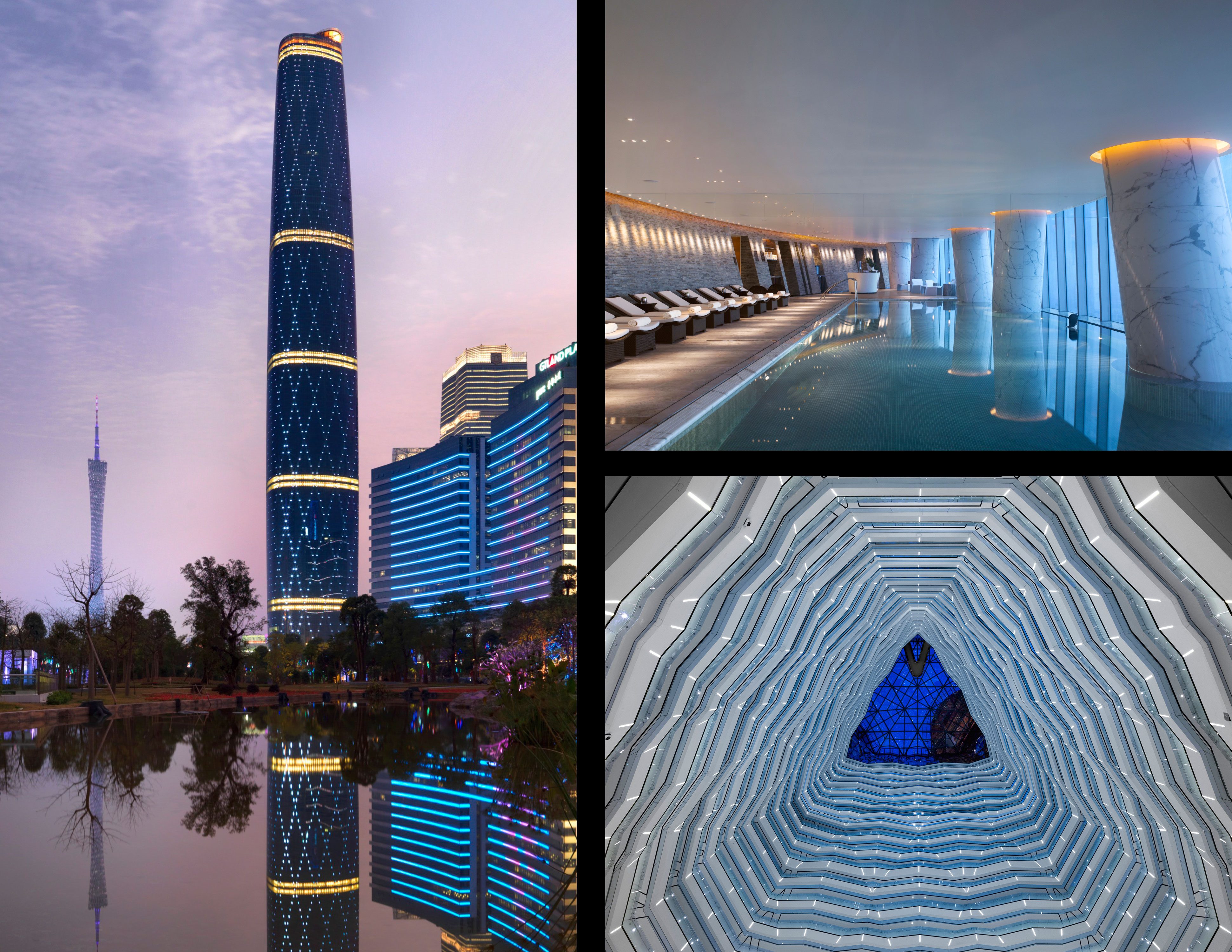
Guangzhou, China 103 fl
Deck Height: 415 m / 1,362 ft Tip Height: 439 m / 1,439 ft
This 440-meter tower rises from a triangular footprint with rounded corners, giving the form an overall curved façade. The lower 66 floors contain office space, and a luxury hotel with a full-height atrium, seen in the model photographed below, stretches another 30 floors above before reaching two observation levels at the summit. Rising out above the uppermost floor is a helicopter-landing pad. The building's most distinctive feature is its perimeter diagrid structural system, which allows for column-free floor plates and drastically reduces the tonnage of steel required for construction.
See IFC in TEN TOPS7. KK100
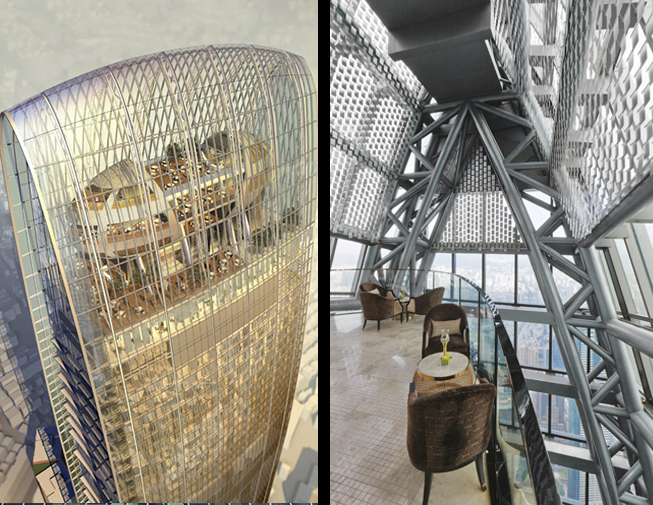
Shenzhen, China 100 fl
Deck Height: 427 m / 1,401 ft Tip Height: 442 m / 1,449 ft
KK100’s curved form and parabolic arch top is meant to evoke the image of a fountain, a symbol of wealth and prosperity. At 100 stories, the mixed-use tower combines an office building below and hotel in the top 26 floors, organized in a ring around a dramatic open atrium. Guests of the St. Regis Shenzhen take elevators directly to the 94th floor Sky Garden Lobby, which opens up into a 6-story cathedral-like space that holds the hotel’s multi-level dining venues and offers breathtaking views of Shenzhen and Hong Kong's New Territories to the south.
See KK100 in TEN TOPS6. CN TOWER
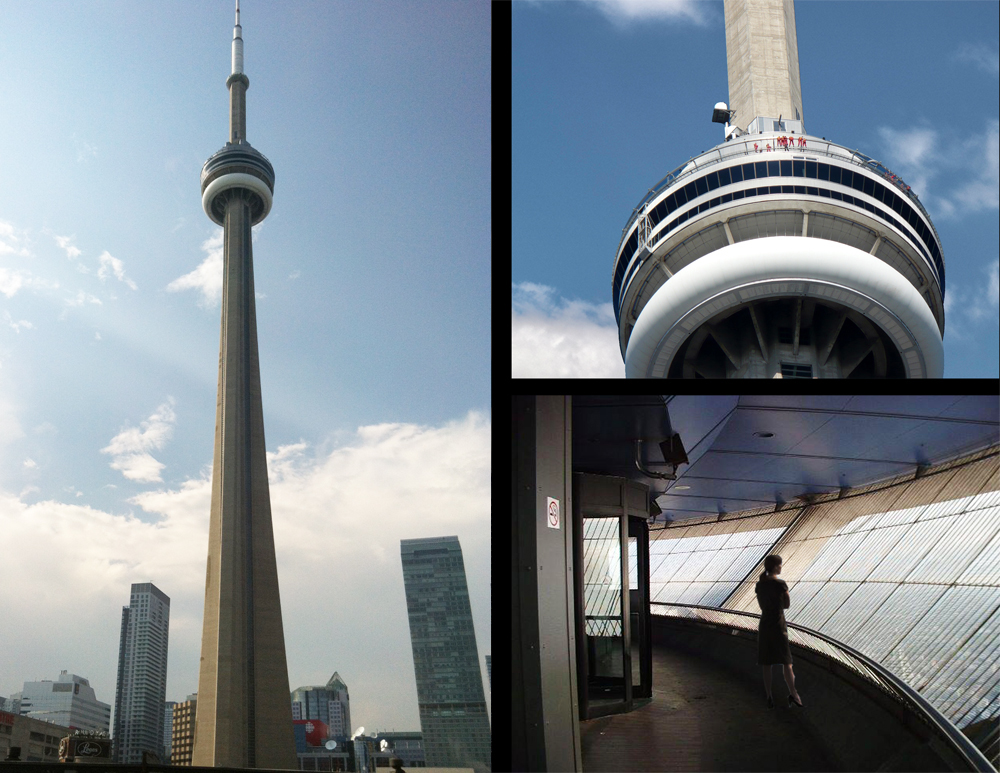
Toronto, Canada
Deck Height: 447 m / 1,465 ft Tip Height: 553 m / 1,815 ft
In Toronto, Canada, the CN Tower offers multiple levels from which to view the cityscape. The highest of the building’s observation decks, the Skypod, stands at a height of 1,465 feet. One level down, the LookOut has an indoor observation deck and accompanying restaurant. On the lowest level of the observatory, a glass floor provides visitors with the Bird’s eye view of Toronto, while the Outdoor Sky Terrace allows them to view the surroundings. The CN Tower also features the EdgeWalk, an attraction where visitors are harnessed to the exterior of the building, as they walk around the outside edge of the main pod and lean out over the city below.
Visit the TEN TOPS virtual exhibit5. TOKYO SKYTREE
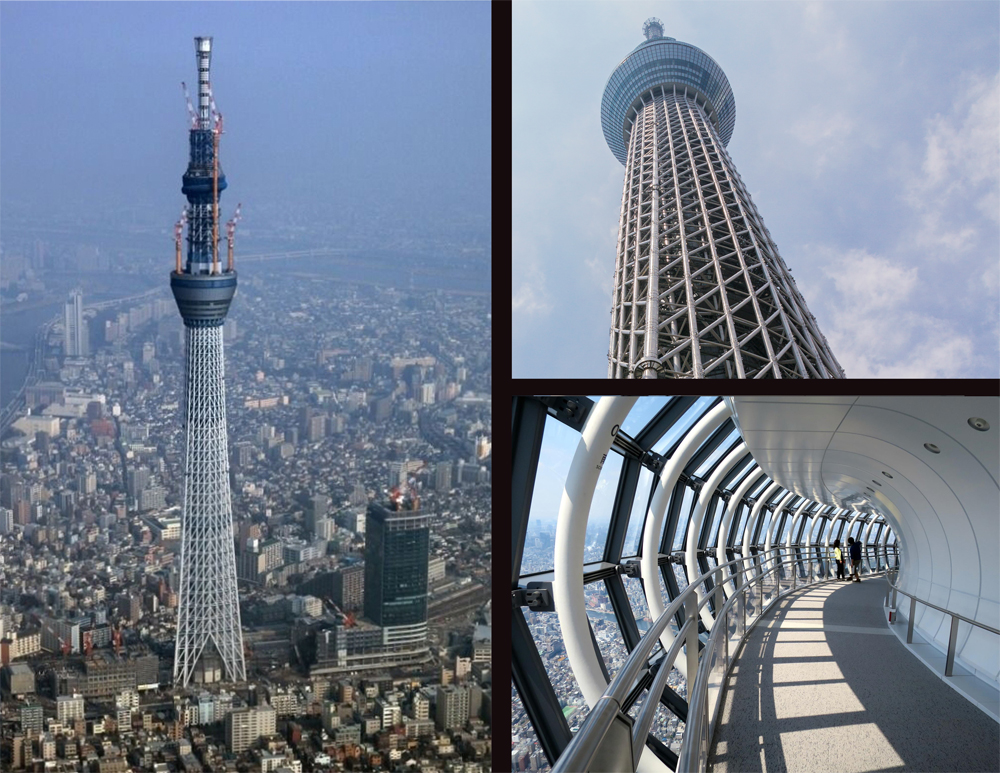
Tokyo, Japan
Deck Height: 451 m / 1,480 ft Tip Height: 634 m / 2,080 ft
At a height of 1,480 feet, the observation deck at the Tokyo Skytree broadcasting tower not only provides panoramic views of the surroundings but also allows visitors to look down through glass floor sections at the city below. There are three other observation levels located at heights of 350m, 345m and 340m. These levels include restaurants, shops, and an art gallery.
View TEN TOPS virtual exhibit
4. SHANGHAI WORLD FINANCIAL CENTER
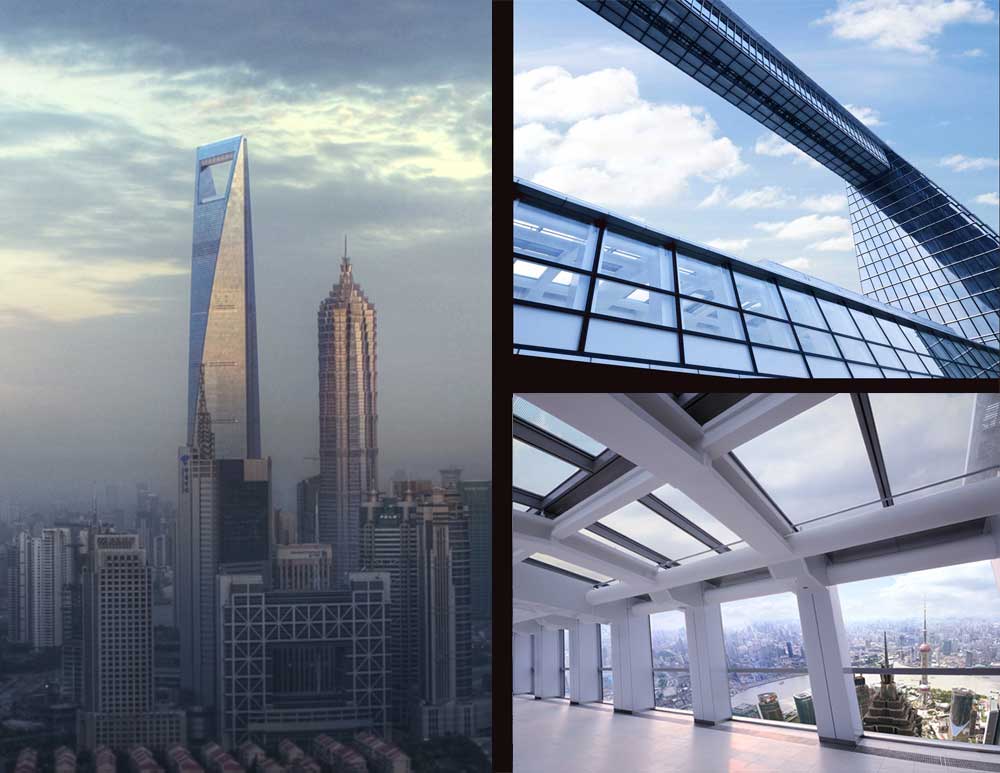
Shanghai, China 101 fl
Deck Height: 474 m / 1,555 ft Tip Height: 492 m / 1,614 ft
It took 15 years for the Shanghai WFC to go from first plans to opening, in part due to a four-year pause in construction caused by the late ‘90’s Asian financial crisis. When construction resumed in 2001, the tower’s design gained nearly 105 feet and the central design element of the tower’s top – a large circular opening – had changed to a square prism. Originally intended by the architect to evoke ancient Chinese celestial stone disks that represent the heavens, as well as the moon gates of traditional Chinese gardens, Chinese government officials instead saw the rising sun of the Japanese flag. The square prism represents the updated, compromise design and holds the indoor observation levels that occupy the floors that define the top and bottom of the trapezoid.
See Shanghai World Financial Center in TEN TOPS3. CANTON TOWER
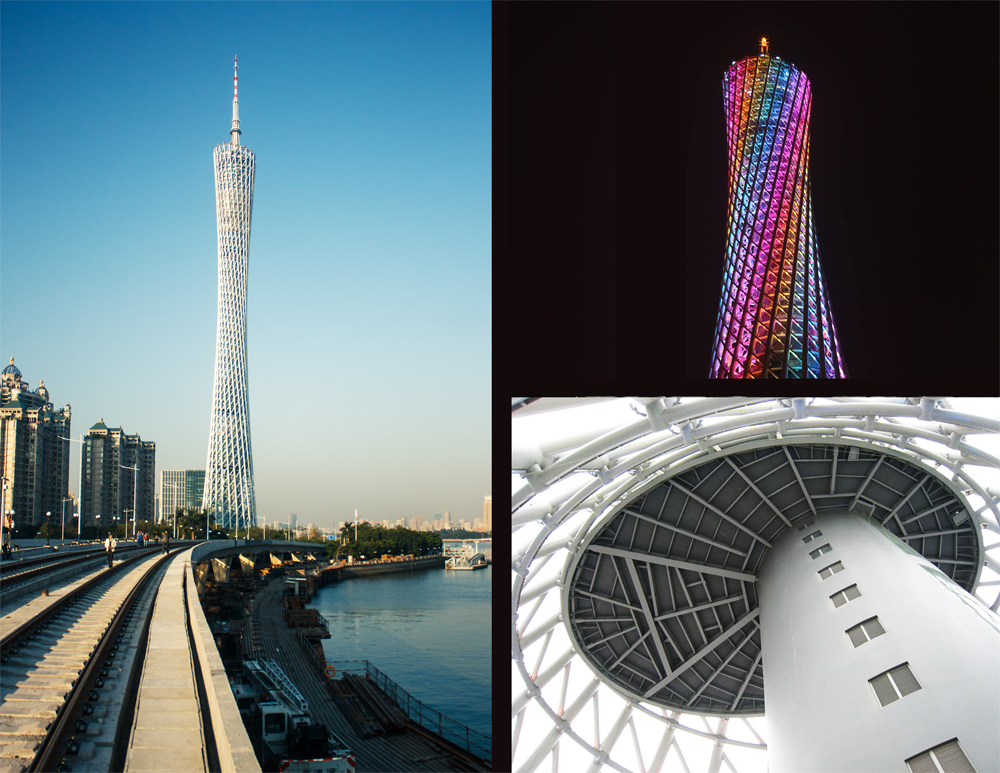
Guangzhou, China
Deck Height: 488m m / 1,601 ft Tip Height: 600 m / 1,696 ft
Located in Guangzhou, China, the Canton Tower hosts some of the world’s highest observation decks. The building has both outdoor viewing platforms, some of which contain gardens, and indoor observatories that consist of protruding glass boxes allowing visitors to view the city below their feet. At a height of 1,601 feet, the highest of these viewing spaces includes several visitor attractions, such as a gravity machine and the world’s tallest horizontal Ferris wheel, which increases the visitors’ panoramic perspective of the surrounding city.
View TEN TOPS virtual exhibit
2. BURJ KHALIFA
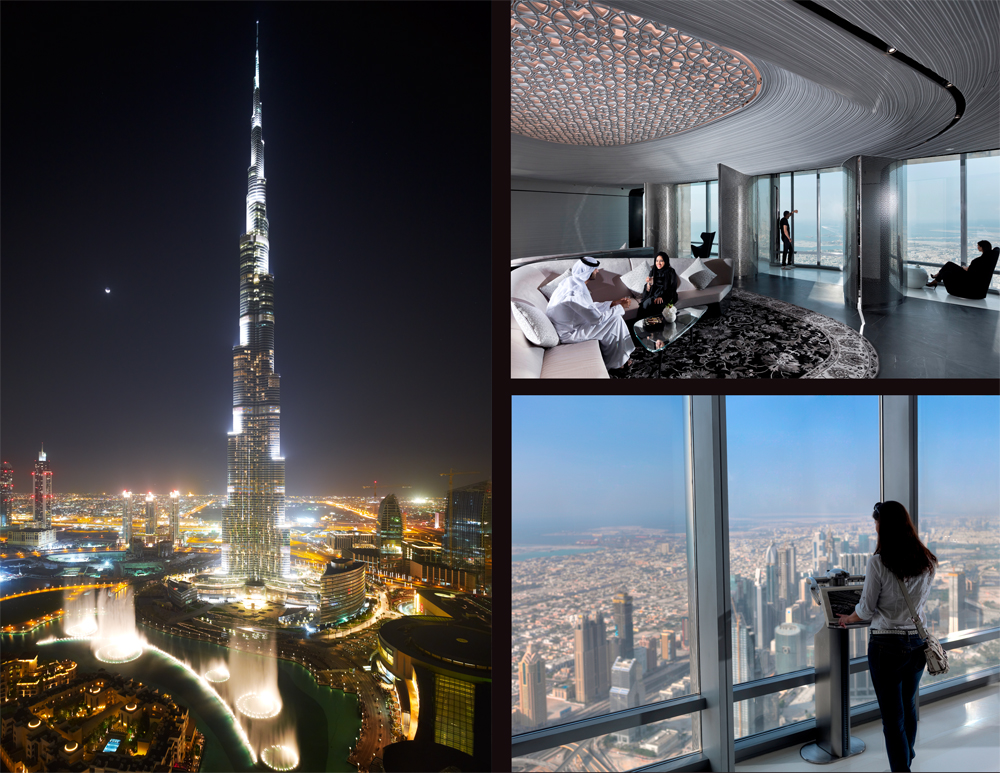
Dubai, UAE 163 fl
Deck Height: 555 m / 1,821 ft Tip Height: 828 m / 2,717 ft
At 2,717 feet, Burj Khalifa is the tallest building in the world in all three categories of the Council on Tall Buildings and Urban Habitat. Taller than two Empire State Buildings, it surpasses the current second-tallest structure, Shanghai Tower, by nearly 700 feet.
Principally residential, the 163-story Burj Khalifa is a mixed-use building that reverses the normal planning logic: the lower stories are occupied by a boutique hotel, above which there are condominium apartments up to the level of the first observation deck on the 124th floor. The top 37 floors, those with the smallest floor plates, are reserved for elite corporate office suites, save for a second observation deck on the 148th floor.
Above level 156, the concrete structure tower switches to steel. The final 136 meters of the spire, a steel pipe weighing 350 tons, had to be assembled in sections within the tower, then jacked into place.
See Burj Khalifa in TEN TOPS
1. SHANGHAI TOWER
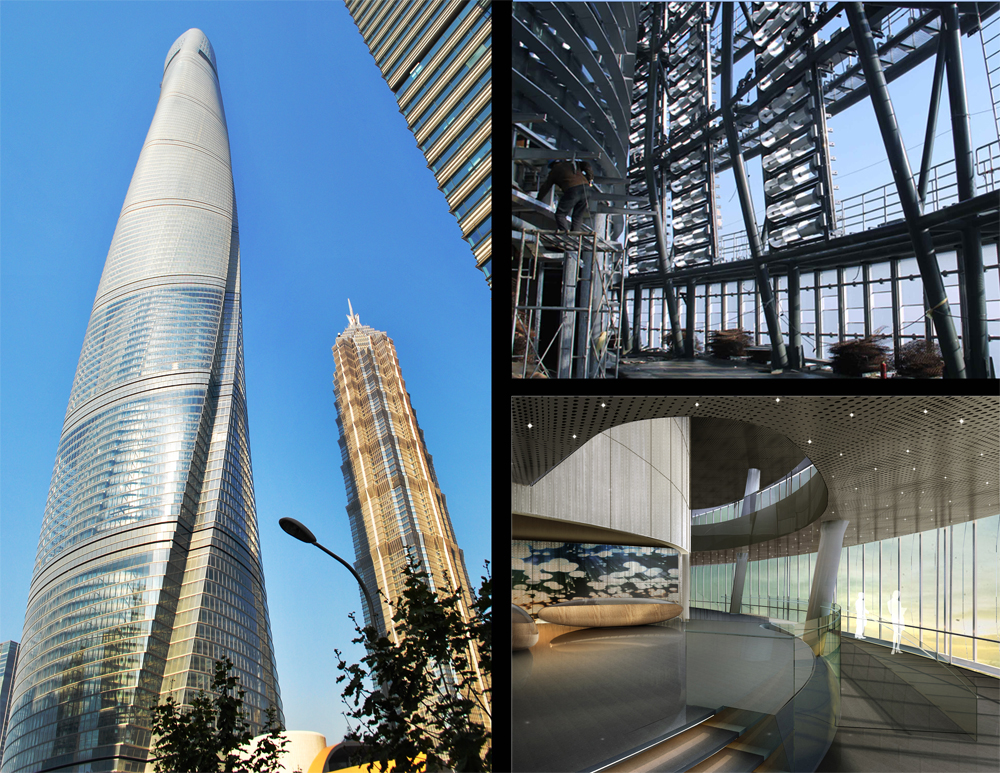
Shanghai, China 128 fl
Deck Height: 561 m / 1,841 ft Tip Height: 632 m / 2,073 ft
Reports about the future opening of the Shanghai Tower’s observation deck are confusing: while some sources had noted June 2015 as the month of opening, there’s too little information currently available to believe that is an accurate date or to predict a more accurate one. When completed, the tourist venue will occupy a height 1,841 feet above the city, making it the highest viewing platform in the world—18 feet above the current tallest at Burj Khalifa.
See Shanghai Tower in TEN TOPS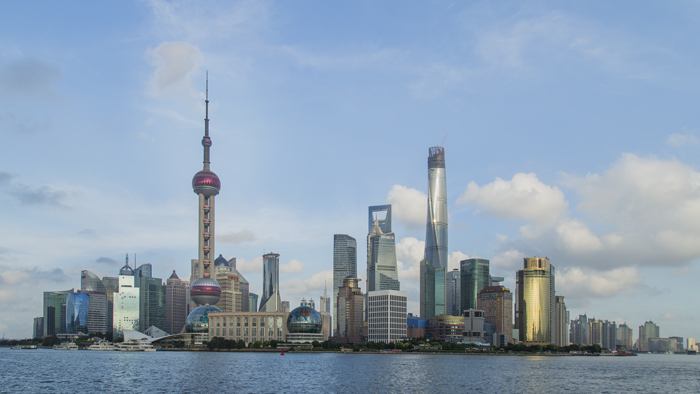
Pudong district in Shanghai. Credit Gensler.
Observation levels and public access have become popular elements in skyscrapers. The Pudong district in Shanghai is the densest concentration of such tourist venues in the world. The first of the four is the Oriental Pearl, which in 1994 was the first major structure to be completed in the ongoing transformation of the new Pudong district. Clustered together in a master plan that is now complete are the iconic trio of supertall skyscrapers, each with its own ticketed observation deck, as well as publicly-accessible hotel restaurants and bars. The 88-story Jin Mao Tower, Shanghai World Financial Center, and Shanghai Tower (opening later this year) compete for tourist attendance. Pudong's dramatic, vertical development is only a piece of the unprecedented urban transformation that has occurred in the world's most populous city throughout the past decades. Learn more about Pudong's rapid growth in CHINA PROPHECY: SHANGHAI.
JIN MAO TOWER
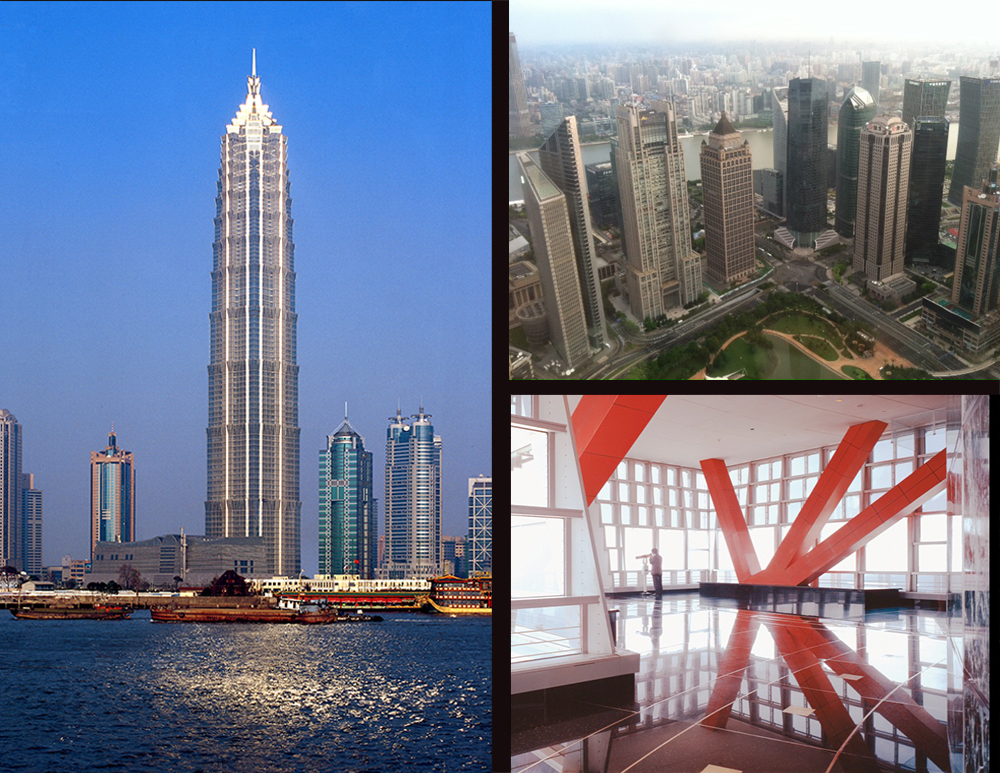
Shanghai, China 88 fl
Deck Height: 340 m / 1,116 ft Tip Height: 421 m / 1,380 ft
Completed in 1999, Jin Mao Tower was Pudong’s first supertall skyscraper and the tallest building in China until it was surpassed by the neighboring Shanghai World Financial Center in 2008. At a height of 1,380 feet, Jin Mao is 130 feet taller than the Empire State Building, but, with a mere 88 stories, does not meet the criteria for inclusion within TEN TOPS. However, the tower’s observation deck, located 1,116 feet above the streets of Shanghai on the building’s 88th floor, is higher than that of the John Hancock Center.
PETRONAS TOWERS
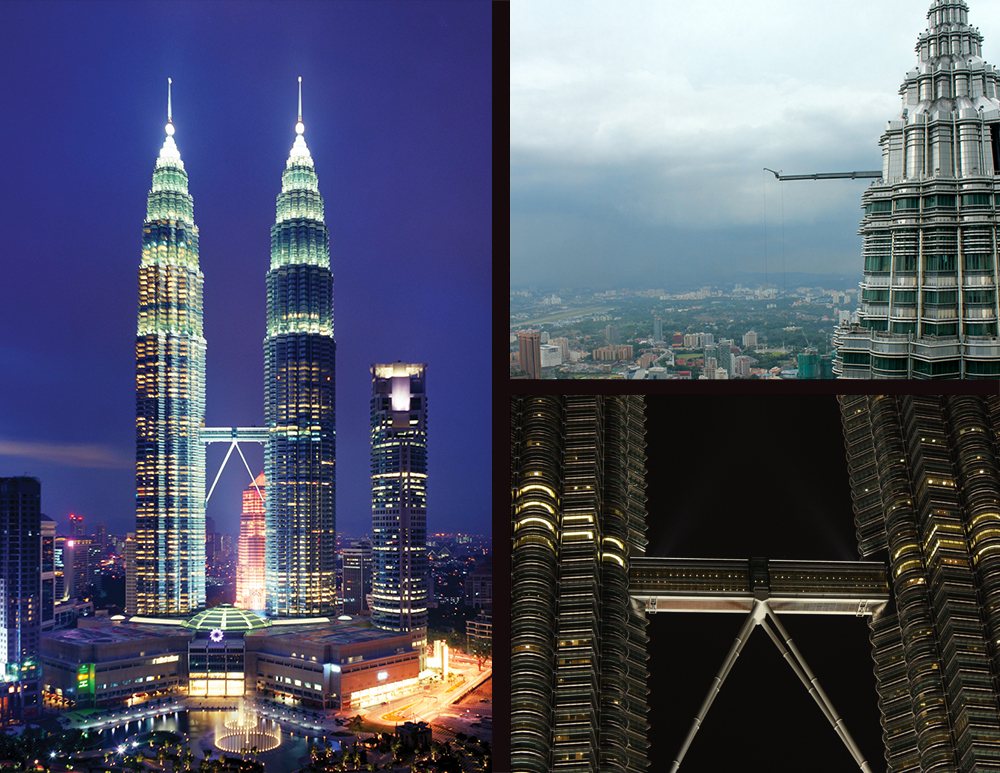
Kuala Lampur, Malaysia 88 fl
Deck Height: 360 m / 1,181 ft Tip Height: 432 m / 1,483 ft
The twin Petronas Towers of Kuala Lampur held the dual tittle of the world’s tallest buildings from 1998 through 2003, and, at 1,483 feet, still remain among the world’s tallest. But, like Jin Mao, they are not included in our list because they fall below 100 stories. The two skyscrapers are connected on the 41st floor by the publicly-accessible, two-story Skybridge, which, at 558 feet, is the world’s highest double-decker bridge. The 86th floor of Tower 2 features an observation deck that offers unparalleled views of the Malaysian capital city.
*Not included
MAKKAH ROYAL CLOCK TOWER
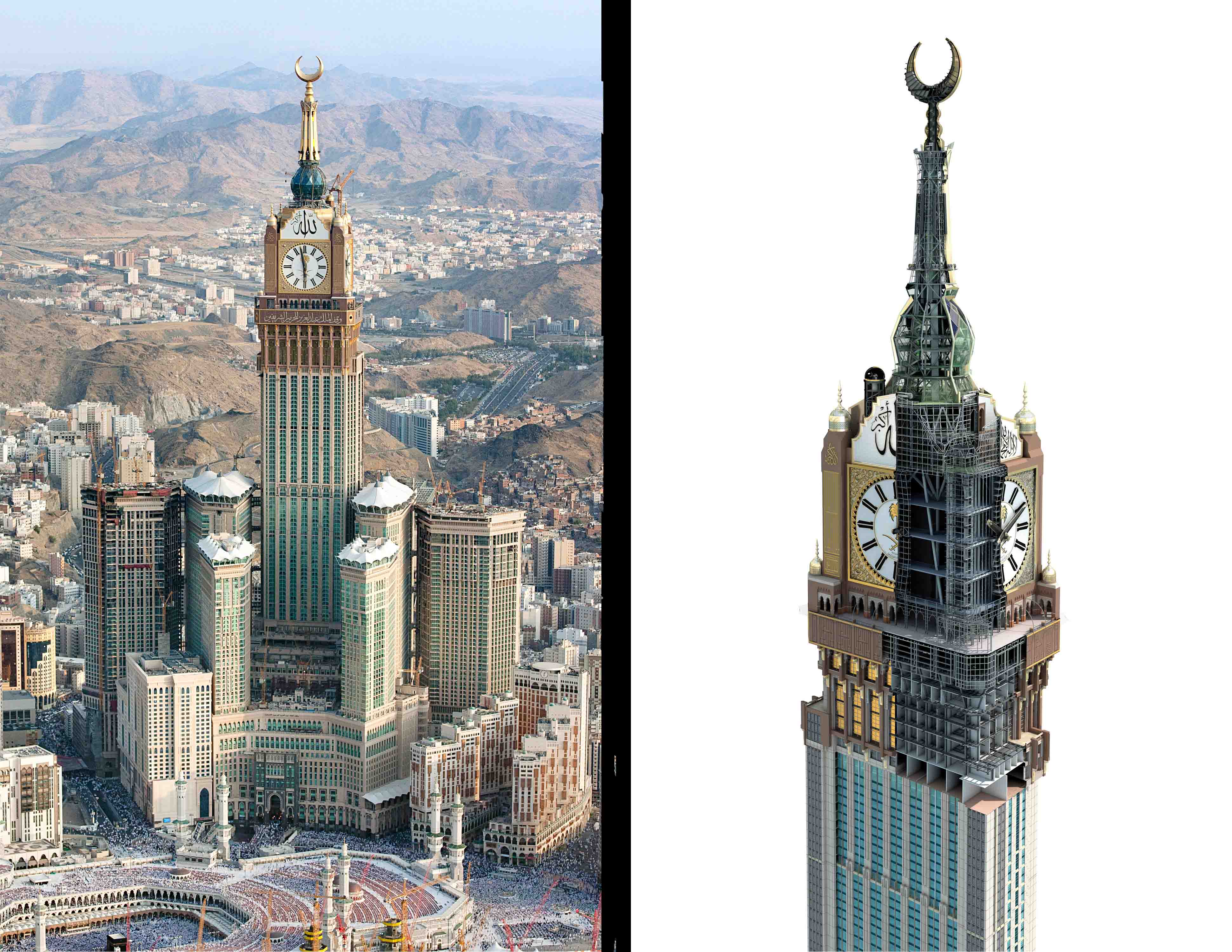
Mecca, KSA 120 fl
Deck Height: 556 m / 1,833 ft Tip Height: 601 m / 1,972 ft
While the Makkah Clock Tower is attached to other towers with hotels, residences, conference centers, and heliports, the true purpose of the building is to keep time. At 2,833 feet, the Lunar Observation Center caters only to Muslim people going on their Hajj, or pilgrimage. The Lunar Observation Center monitors the position of the moon as a means of keeping time according to Islamic faith. While the Clock Tower’s overall height, and the height of the observation center surpass many other examples on our list, we did not include the Clock Tower on our list since we distinguish between tourism and pilgrimage.
See the Makkah Royal Clock Tower in TEN TOPSView TEN TOPS virtual exhibition and more alternative TOP TENS

